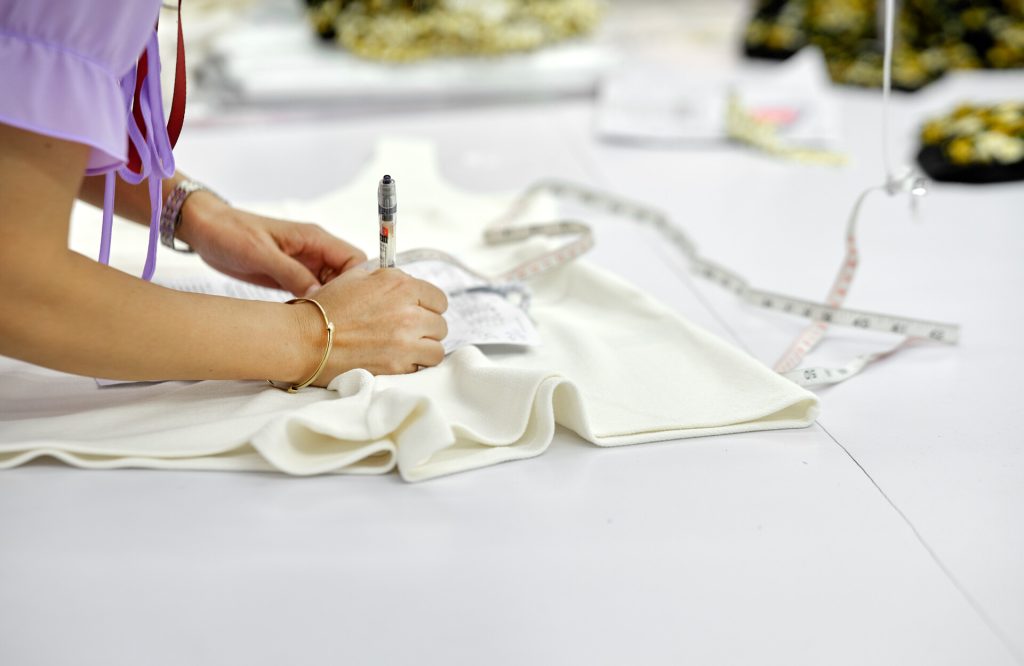Collecting and sorting textiles is vital to circulate products and materials at their highest value and prolong their life.
Why is collecting, sorting, reusing and recycling textiles important?
Too much usable clothing ends up in landfill. Instead of treating our used garments as waste, we should treat them as precious resources to be collected, sorted and reused before finally being recycled into new garments, helping to create a circular fashion industry.
To successfully transition to a circular model, we need a system shift and this will take time. For decades our industry has operated in a linear way, which means that current policy, legislation and infrastructure are not set up for a circular world.
Give your pre-loved clothes and textiles another life
What are we doing at H&M Group?
Across the H&M Group we are working to increase the rate of textile collection and reuse, improve sorting and recycling technology, as well as working with policy makers to enable the transition to a circular industry.
We are also increasing the amount of recycled fibres used in our products. Find out more about how we work with materials here.
Garment collecting
We were one of the first brands to launch a garment collecting programme in 2013 and since then we have received over 172,700 tonnes of textiles.1 Customers can drop off their unwanted items in our stores worldwide. We aim to ensure our partners sort them according to their condition, following criteria set out in the EU waste hierarchy, which prioritises reuse before recycling:
- Reuse – garments that can be worn again are sold as second-hand clothes.
- Repurpose & recycle – old clothes and textiles that cannot be resold are repurposed or recycled into new products and fibres.
- Energy recovery – items that do not fit into the above categories are disposed of in other ways prioritising incineration for energy production.
In 2023, 68% of the textiles collecting in our stores were resold, 24% repurposed or recycled and 8% were disposed prioritising incineration to recovery energy.2
At the H&M Group, we are categorically against clothing becoming waste and it goes against our work to circulate products and materials at their highest value. Extended responsibility for products beyond customer use into end of life is important to prevent garments and unwanted textiles ending up in landfill or in markets where there is no or limited recycling infrastructure.
Collecting and sorting
In early 2023, we launched Looper Textile Co., an independent joint venture with Remondis that provides local municipalities and retailers with solutions to extend the useful life of unwanted garments via reuse and recycling.
Recycling polyester waste
In early 2024, we launched Syre with Vargas Holding – a joint venture to scale textile-to-textile recycled polyester. Syre aims to produce recycled polyester with the same quality as virgin polyester, but with a lower impact on the planet.
Recycling cotton waste
Infinited Fiber Company makes regenerated cellulosic fibre from cotton waste. Infinna™ was first used by Weekday. H&M Group Ventures has invested in the company to help them move closer to commercial volumes.
Collecting and recycling in our supply chain
Producing garments and textiles generates fabric offcuts and scraps that are a vital resource, just like all textile waste. Circulating these materials at their highest value can reduce our impact. We have created guidelines to help our suppliers and are building networks of recyclers to recirculate post-industrial/pre-consumer waste in our supply chain supported by the digital platform Reverse Resources.
Systems shift
Products can be designed for circularity, recycling or disassembly, but without adequate infrastructure or the right regulations it can be difficult to recover and recirculate them. We need to increase the rate of textile collection and sorting, develop automatic sorting technology and scale up local textile to textile recycling technology. To make this happen, we need a shift in policy. We have released a position paper on waste as a resource calling for a secondary raw materials market for textiles within the European Union (EU). We believe this can be achieved by:
- Establishing an EU-wide harmonised Extended Producer Responsibility to enable efficient collecting, sorting and recycling across the EU.
- Defining post-consumer textiles as resources.
- Making free movement of textile resources easier globally and within the EU.
- Increasing recycling capacity and standardising sorting, collecting and recycling infrastructure across the EU.
We aim to increase our focus on end-of-life responsibility by continuing to improve operational efficiency, transparency, waste and recycling infrastructure. We will also deepen and further integrate our partnership with our sorting partners, so that together we can work on solutions.
Where to recirculate and recycle your preloved garments and textiles
Did you know that the most valuable clothing is already in your wardrobe? Between 2000 and 2015 clothing production doubled but the number of times an item of clothing was worn before being thrown away fell by over a third (Ellen MacArthur Foundation, Circular Business Models, Redefining Growth for a Thriving Fashion Industry, 2021).
Before you leave your pre-loved items at our stores have you thought about having a clothes swap with your friends, repairing or even reselling your garments? Find lots of useful tips on how you can repair and extend the lifespan of your clothing with H&M Take Care.
Almost all our stores have garment collecting points and accept textiles from any brand in any condition, even holey socks! Here’s a list of what you can send for recirculation and recycling and where:
Find your local H&M garment collecting point
H&M accepts all garments and textiles. Read more here and find your local store here.
Find you local &Other Stories garment collecting point
&Other Stories accepts pre-loved garments and textiles from all brands. Also accepts beauty packaging. Read more here and find your local store here.
Find your local Arket garment collecting point
Arket accepts all textiles, garments and shoes plus ARKET product packaging. Read more here and find your local store here.
Find your local Monki garment collecting point
Monki accepts used clothes and home textiles. Read more here and find your local store here .
Find your local Weekday garment collecting point
Weekday accepts used clothes and home textiles. Read more here and find your local store here.
Find COS garment collecting points
Accepts COS clothing only as part of a pilot project in several European countries. Read more here and find stores here.
1 For more information about our garment collection project, please see our Sustainability Disclosure, page 55.
2 Numbers can vary due to seasonal variation.
We publish our Sustainability Disclosure annually. In this document, we set out our goals and the progress we’ve made in the previous year. Find the latest version here. More up to date information can be included on this page.


